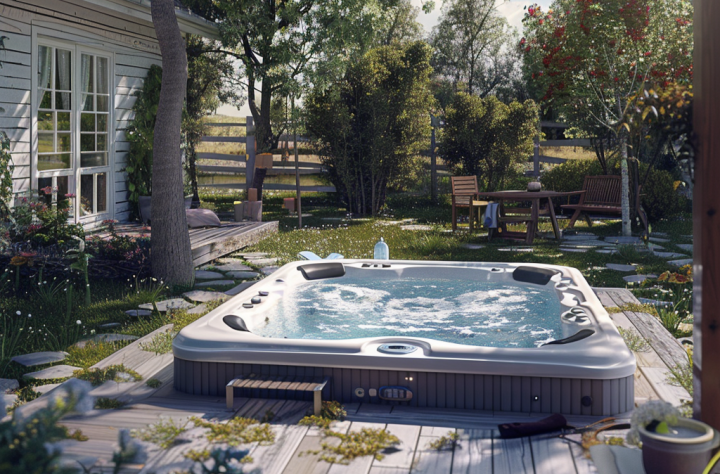Types of Hot Tubs
Portable Hot Tubs: These are the most common and can be easily moved or relocated. They are typically made of acrylic or plastic.
- Inflatable Hot Tubs: Made from durable vinyl, these hot tubs are budget-friendly and can be deflated and stored when not in use.
- In-Ground Hot Tubs: Custom-built into the landscape, these provide a permanent and often luxurious spa experience.
- Wooden Hot Tubs: Made from cedar or redwood, these offer a rustic and natural aesthetic, often using wood-burning stoves for heating.
- Swim Spas: Combining a hot tub with a small swimming area, these are ideal for both relaxation and exercise.
Key Features to Consider
- Size and Capacity: Determine the number of people who will use the hot tub and choose a size accordingly. Common capacities range from 2 to 8 persons.
- Material: Hot tubs can be made from acrylic, vinyl, fiberglass, or wood. Each material has its advantages in terms of durability, insulation, and aesthetics.
- Jets and Pumps: The number and placement of jets, as well as the power of the pumps, affect the massage quality. Look for adjustable jets for a customizable experience.
- Heater: Ensure the hot tub has a reliable and efficient heater to maintain the desired temperature, especially in colder climates.
- Filtration System: A good filtration system is essential for keeping the water clean and clear. Consider hot tubs with multi-stage filtration systems.
- Control System: Modern hot tubs come with digital control panels for adjusting temperature, jet settings, and lighting.
- Insulation: Proper insulation helps maintain water temperature and improve energy efficiency. Look for hot tubs with high-quality insulation materials.
- Additional Features: Consider features such as LED lighting, built-in sound systems, waterfalls, and aromatherapy options for an enhanced spa experience.
Installation Tips
- Location: Choose a level, stable surface that can support the weight of the hot tub when filled with water and people. Consider proximity to electrical outlets and privacy.
- Electrical Requirements: Hot tubs require a dedicated electrical circuit. Consult with a licensed electrician to ensure proper installation and safety compliance.
- Access: Ensure there is adequate access for maintenance and servicing. This includes sufficient space around the hot tub for cover removal and cleaning.
- Permits: Check local regulations to see if you need any permits for installing a hot tub, especially for in-ground or permanent installations.
Maintenance Practices
- Water Chemistry: Regularly test and balance the water's pH, alkalinity, and sanitizer levels to maintain safe and clean water. Use appropriate chemicals to adjust levels as needed.
- Cleaning: Clean the filter regularly and replace it as recommended by the manufacturer. Drain and clean the hot tub every 3 to 4 months to remove buildup and debris.
- Cover: Use a high-quality cover to keep debris out, maintain temperature, and reduce energy costs. Clean the cover regularly and ensure it is in good condition.
- Winterization: If you live in a cold climate and do not plan to use the hot tub during winter, properly winterize it by draining the water and blowing out the plumbing lines to prevent freezing.
- Routine Inspections: Regularly inspect the hot tub for any signs of wear, leaks, or damage. Address any issues promptly to avoid more significant problems.
Health Benefits of Hot Tubs
- Stress Relief: The warm water and massage jets help relax muscles and reduce stress levels.
- Pain Relief: Hot tubs can alleviate joint and muscle pain, making them beneficial for those with arthritis or sports injuries.
- Improved Circulation: The heat and hydrotherapy promote better blood flow and circulation.
- Better Sleep: Soaking in a hot tub before bedtime can improve sleep quality by relaxing the body and mind.
- Detoxification: The heat helps open pores and eliminate toxins from the body through sweating.
Conclusion
Hot tubs offer a luxurious way to relax and enjoy numerous health benefits. By understanding the different types of hot tubs, considering key features, and following proper installation and maintenance practices, you can ensure a pleasant and long-lasting spa experience. Whether you use your hot tub for relaxation, pain relief, or socializing, it can be a valuable addition to your home.
